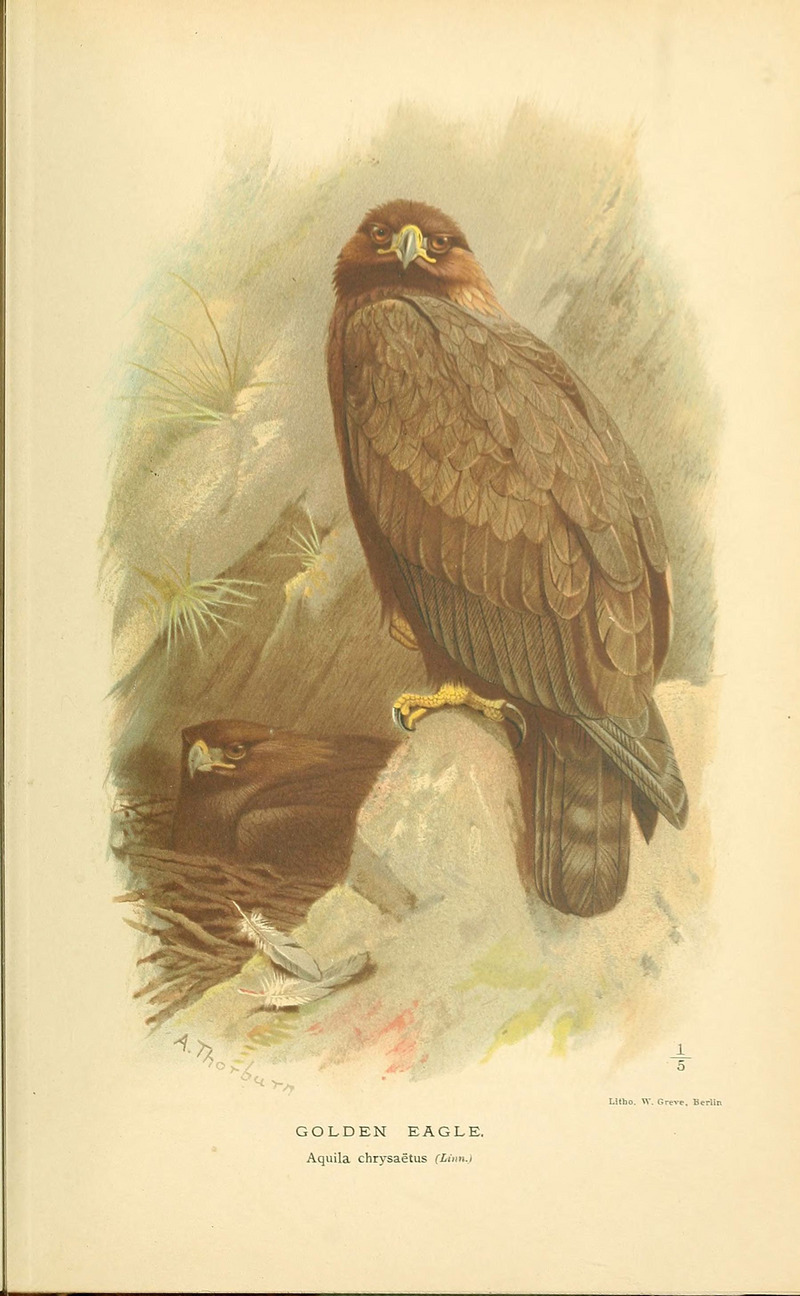|
| Query: Birds | Result: 1100th of 32675 | |
golden eagle (Aquila chrysaetos)
| Subject: | golden eagle (Aquila chrysaetos)
| | Poster: | Wiki Photos (---@---.---)
| |

| Resolution: 1798x2912
File Size: 528627 Bytes
Date: 2011:08:10 09:17:33
Upload Date: 2017:03:12 15:45:38
|
Description
GOLDEN EAGLE.
Aquila chrysaetus (Linn.)
Ulho. W. Greve. Berlin
Date 1885
Source http://www.flickr.com/photos/biodivlibrary/6028609879
Author Keulemans, J. G.; Lilford, Thomas Littleton Powys; Newton, Alfred; Salvin, Osbert; Thorburn, Archibald
Full title Coloured figures of the birds of the British Islands / issued by Lord Lilford.
Source: https://commons.wikimedia.org/wiki/File:Coloured_figures_of_the_birds_of_the_British_Islands_-_issued_by_Lord_Lilford_(6028609879).jpg
The golden eagle (Aquila chrysaetos) is one of the best-known birds of prey in the Northern Hemisphere. It is the most widely distributed species of eagle. Like all eagles, it belongs to the family Accipitridae. Despite being extirpated from or uncommon in some of its former range, the species is still fairly ubiquitous, being present in sizeable stretches of Eurasia, North America, and parts of North Africa. |
^o^
Animal Pictures Archive for smart phones
^o^
|
|

